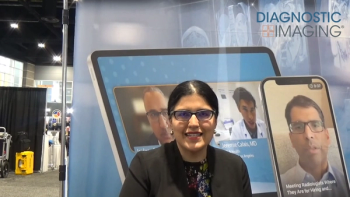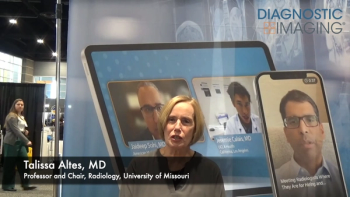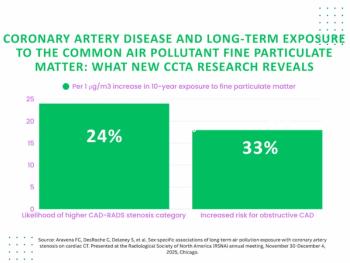
What a New Study Reveals About Radiographers and Mammography Assessment
In a new United Kingdom study comparing radiologist and radiographer assessment of over 1.4 million digital mammograms, researchers said there were no significant differences with cancer detection rates or recall rates.
In light of radiology shortages, the authors of a new study suggest that radiographers could play a role in assessing mammograms.
In a
The mean cancer detection rate (CDR) for radiologists was 7.84 per 1,000 mammograms versus 7.53 per 1,000 mammograms for radiographers, according to the study authors. The researchers also saw no significant differences with mean recall rates (5.0 percent for radiologists in comparison to 5.2 percent for radiographers) nor positive predictive values (17.1 percent for radiologists and 16.1 percent for radiographers), according to the study.
“Readers from each professional group showed no statistically significant difference in the key screening performance metrics of cancer detection rate, recall rate (RR), and positive predictive value (PPV) and demonstrated lower RR and higher PPV with more reader experience,” wrote lead study author Yan Chen, M.D., an associate professor of Cancer Screening within the Faculty of Medicine and Health Sciences at the University of Nottingham School of Medicine, and colleagues.
Chen and colleagues also noted no significant differences in the mean CDR between readers with five years of experience or less (7.71 per 1,000 mammography exams) and readers with more than a decade of experience (7.75 per 1,000 mammography exams).
Regardless of professional group, the researchers noted that readers with five years of experience or less had a higher mean RR (5.8 percent) versus those with greater than 10 years of experience (4.8 percent). Similarly, Chen and colleagues noted little variation in PPV between radiologists and radiographers but readers with more than 10 years of experience had a 17.5 percent PPV in comparison to a 14.9 percent PPV for readers with five year of experience or less.
While acknowledging that more studies are necessary to assess the potential role of physician extenders to review mammograms, Chen and colleagues said the study findings suggest “(the) use of trained radiographer readers in the double-reading workflow may offer a potential solution to the shortage of radiologists experienced by some breast screening programs.”
In an
While Drs. Hooley and Durand noted the “potential (of physician extenders) to mitigate the high breast imaging workload without sacrificing patient care,” they maintained that investment and resources would be necessary to develop training programs for these clinicians.
In regard to study limitations, the authors said potential sources of bias may have stemmed from the exclusion of 124 clinicians who did not consent to analysis of their mammography assessments, and a possible exclusion of lower volume readers due to the study’s focus on readers who completed the minimum National Health Service Breast Screening Program (NHSBSP) standard of 1,500 first reader assessments a year. The study authors also pointed out the three-year screening interval in their study population and the focus on two-dimensional digital mammography as opposed to digital breast tomosynthesis (DBT).
Newsletter
Stay at the forefront of radiology with the Diagnostic Imaging newsletter, delivering the latest news, clinical insights, and imaging advancements for today’s radiologists.




























